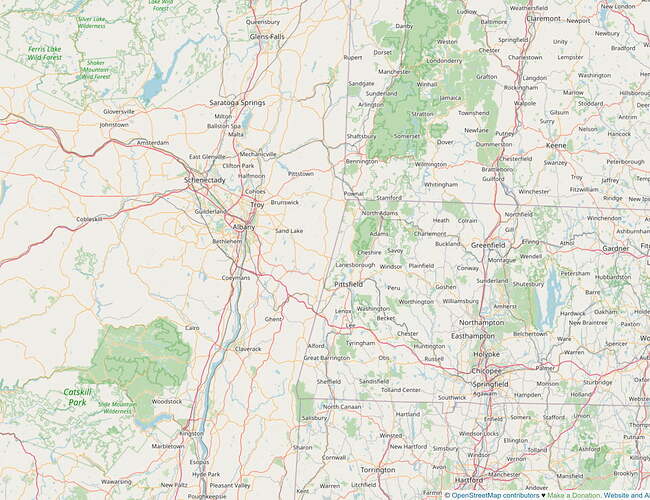Recently I’ve noticed quite a few more village names displaying more prominently than I remembered on the standard layer in my state (Vermont). It looks like someone systematically went through the state ensuring that every municipality contained a place=town node with the same name. This is a very rural state with many municipalities containing only small settlements that really only qualify as place=village or place=hamlet. Prior to these edits several months ago (example), the state had a relatively accurate mix of place types spread across city, town, village, and hamlet. Now there are far too many towns.
I’m realizing that the reason this mapper probably felt the need to overdo it with the towns is that many neighboring states (NH, ME, MA, CT) suffer from this same sort of town inflation. The difference between New York and the New England states is striking at zoom 9:
https://www.openstreetmap.org/#map=9/42.7399/-73.2678
On the left (NY) we see clusters of place=town & place=city in the densely populated areas, and since place=village and place=hamlet don’t render at this zoom level, rural areas lack place name labels. This is appropriate and expected. On the right (VT, NH, MA, CT) we see consistent coverage of place name labels as nearly all municipalities have a place=town node whether they are large enough or not. This is not an accurate representation of place name importance. I believe this has happened because the basic administrative division in New England is called a “Town” regardless of population. The Town of Victory has just 70 residents, for example. So it seems mappers have assume that if a place if is called Town of SomeName, then it must be a place=town, not realizing that the definition of the OSM tag is:
An important urban centre, between a village and a city in size
I plan to revert these classification changes at some point, but I feel that this problem needs to be resolved all across New England or it will just re-appear. Anyone up for a region-wide town reclassification project?
